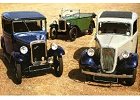 |
|
1922 - 1939
It could be argued that the Austin 7 transformed motoring
for residents of the UK as Henry Ford’s Model T
did for the Americans. The Seven would be built for 17
years between 1922 and 1939, filling a market segment
between the cycle-cars and the more established larger
cars of the day. More >>
|
 |
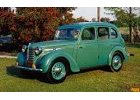 |
|
1932 - 1939
Launched in 1932, the Austin 10 would become the companies
best seller for the remainder of the decade, then continuing
in production (albiet with significant revisions) right
up until 1947. Conservatively designed, the Austin 10
used a pressed steel body built on a cross braced chassis.
Foot
to the floor, going downhill and with a slight tail wind,
the 10 could easily reach 55mph. More >>
|
 |
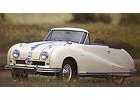 |
|
1948 - 1952
The A90 Atlantic was first built in prototype form in
1947 being the first British car to be designed for the
U.S market. Upon its launch in 1948, it became an overnight
sensation. More >>
|
 |
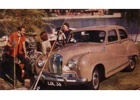 |
|
1950 - 1954
Affordable and popular they may have been, but the middle and larger sizes of the Austin range were hardly high-performance cars. Perhaps the word performance should not be used when describing the A.70, however it is fair to say that the Hereford took on an entirely different character from that associated with this famous make up to 1939. More >>
|
 |
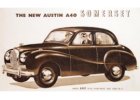 |
|
1951 - 1953
The Austin A40 Somerset was launched in 1951 and had a short production run of just two years. It was similar in appearance to the smaller A30 saloon car, but was built on a separate chassis unlike the A30 which was Austin's first unitary construction car. More >>
|
 |
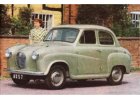 |
|
1951 - 1956
The Austin A30 saloon car was introduced in 1951 and featured a newly designed 803cc four cylinder overhead valve engine which later became known as the A series engine. More >>
|
 |
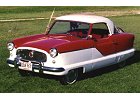 |
|
1954 - 1968
The first Austin Metropolitan sported the 1,200 cc A40 engine, but in March 1957 this was replaced by the A50 unit, making it the cheapest 1½ liter car on the U.K. market. A further distinction was that it was the only model manufactured in the UK that came with a built-in radio as standard equipment. More >>
|
 |
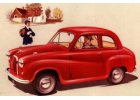 |
|
1956 - 1968
Mechanically the A35 was fairly standard, with independent/coil springs front suspension, a beam axle and semi-elliptic leaf springs at the rear, and worm type steering. While the new engine gave the A35 better performance, much of the improvment was actually the result of different gearbox ratios, which were better spaced. More >>
|
 |
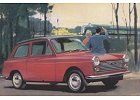 |
|
1958 - 1967
The A40 "Farina" is the best and most fondly
remembered A40 in Australia. First introduced
in 1958, it would remain in production until
1967, after which time over 340,000 had been
manufactured. The wonderful and innovative
body style came courtesy of Pinin Farina
(thus the name), and the best feature was
undoubtedly the revolutionary “hatchback” style,
a world first. More >>
|
 |
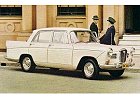 |
|
1962 - 1966
The 6 cylinder Austin Freeway sedan and station wagon,
and Wolseley 24/80 were released in April 1962. These
cars were developed by BMC Australia to counter the growing
popularity of the new 6 cylinder rivals from the US,
namely the GM Holden and Ford Falcon. More >>
|
 |
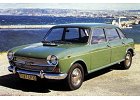 |
|
1965 - 1970
When introduced, the 1800 was far from ordinary. It soon
became affectionately known as the “landcrab”,
in reference to the elongated and low slung body style.
Voted European Car of the Year for 1965, BMC were certainly
on a winner with their new “large” car. More >>
|
 |
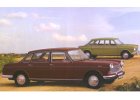 |
|
1967 - 1971
The Austin 3 Litre was a substantial car, expanding upon the successful formula of front engined rear wheel drive, whilst incorporating many design features which had made the Mini's, 1100's and 1800's so outstanding. Significantly, it was also the first Austin production car to have all-independent suspension and rear wheel drive. More >>
|
 |
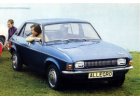 |
|
1973 - 1983
Designed as a replacement for the wonderful Austin 1100/1300,
the car promised much, but delivered little. A victim
of the ailing British car industry of the time, much
like the woeful Morris Marina, the Allegro featured poor
design, insipid performance, appalling build quality,
non existent re-sale value wrapped in a design that not
even a mother could love. More >>
|
 |
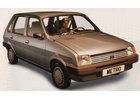 |
|
1980 - 1987
Seven years of planning, design, replanning, redesign, and more than £275 million went into British Leylands Austin Mini Metro. Although not as revolutionary as Alec Issigonis' Morris/Austin Mini was in 1959, the then new front-drive model from the nationalised British factories was nevertheless an attractive little family car. More >>
|
 |
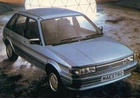 |
 |
1983 - 1994
The Austin Maestro was a very important car. In fact, it was the key to the continued existence of British Leyland itself; the Metro was the first step along the road to recovery, but complete salvation could only be achieved if the more profitable Maestro became a success. More >>
|



















